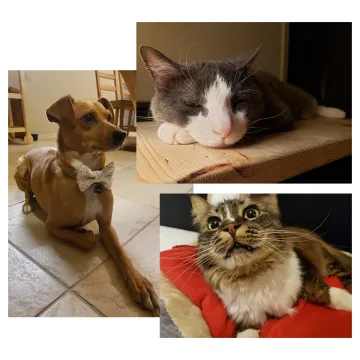Another Wavelength: Natzem Lima

This week in Another Wavelength, we chat with 3rd year Ph.D. student Natzem Lima. Natzem is advised by Assistant Professor Travis Sawyer.
Where are you from?
I was born in Guatemala City, Guatemala. I came to the U.S. when I was four and have had an adventurous journey through the U.S. First I lived in Houston, TX, then in the suburbs of Romeoville, IL, and finally I settled in Queen Creek, AZ.
What brought you to study optics?
My frustration with seeing computers as blackboxes laid the breadcrumb trail for me to discover optics as an independent field of study. Understanding how we can process information with transistors brought me to wonder about how we made so many in such a small package. This led me to lithography systems that project patterned light onto photosensitive films. And this is where the fun began and I discovered the Wyant College of Optical Sciences!
Who is your hero in science?
Dr. Michael McKelvy. He was my highschool chemistry instructor for two years. He gave even the most simple observations so much depth and intrigue. His ability to engage a wide spectrum of students fortified me with the belief that we are all born scientists and it is how the world cultivates us that we end up asking more or less questions. For four years I saw his dedication to a program that he has grown from the craddle since 2007 called Science is Fun, a program born to enhance student interest and their self-efficacy and abilities associated with science, as well as their perceptions of science and who can be a scientist.
Describe your research in 20 words or fewer.
I measure things with light, I measure light with things, and I measure light with light.
Describe your research in 200 words or fewer.
Our laboratory is focused on developing and applying optical technology to advance healthcare and medicine in all environments including the laboratory, the clinic, and the field. Our research includes developing novel cancer screening technologies using spectral and polarization imaging coupled with machine learning; designing and building endoscopes and other point-of-care systems for minimally-invasive screening; and identifying novel biomarkers for early-stage cancer. We also aim to develop tools for basic science applications including validation methods for diffusion MRI, generating mouse models of rare cancers, and probing genetic and molecular changes with the onset of cancer.
Specifically I am working on the system design of a multispectral fluorescence imaging (MFI) tool, which is a powerful imaging modality for tissue analysis and diagnostic imaging. By illuminating with distinct wavelengths of light, intrinsic biological fluorophores and labeled markers can be measured, providing information about tissue metabolism and function. MFI has shown particular promise in the scope of gastrointestinal (GI) cancers such as colon and gastric cancers. Before MFI can be used as a diagnostic tool there requires extensive characterization of tissue properties to identify biomarker variations that occur with the onset of disease. This brings us back to the motivation of the project which is to build a robust, high-resolution instrument to characterize autofluorescence properties GI cancers which will greatly inform the development of diagnostic imaging platforms.
Name three neat facts about you.
- As far as I know, I am the only person in the world with my name. My intended name (Nazzem) was mispelled on my birth certificate since a "z" was mistaken for a "t". This is a gift in uniqueness but a tragedy in lack of anonimity.
- The best crispy chicken I have had is from Buddha Ruhksa in West Seattle, it was the first time I realized food could bring tears of joy.
- I have three wonderful pets: Ali (dog), Button, and Trooper (gray cat). They are way too cute.

